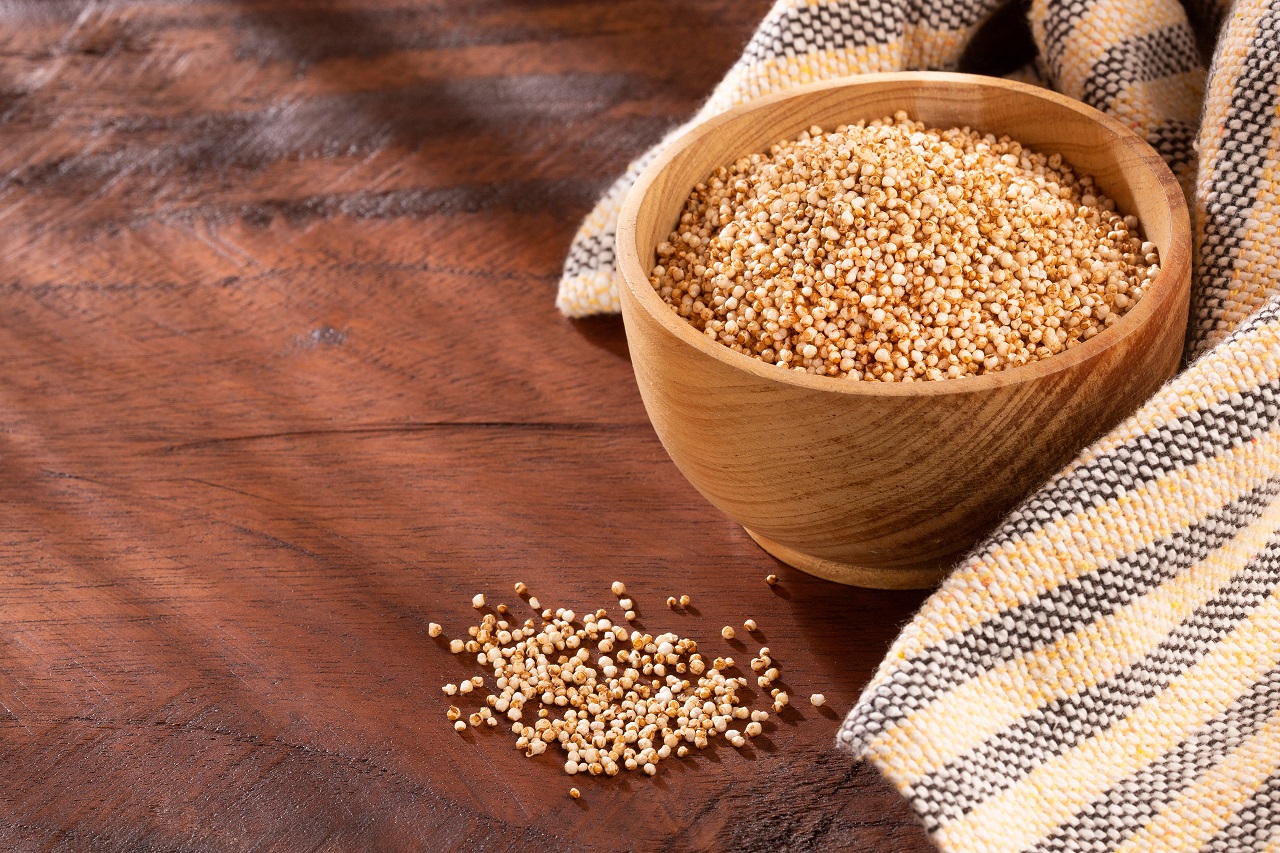 In India, this supergrain is called Rajgira (royal grain) or Ramdana (grain given by Lord Ram), for its amazing utility and health benefits. In English, it is known as Kingseed or Amaranth (derived from a word which means ‘never ending’ in Sanskrit). All these names are quite accurate. Read on to know more about this wonderful grain!
In India, this supergrain is called Rajgira (royal grain) or Ramdana (grain given by Lord Ram), for its amazing utility and health benefits. In English, it is known as Kingseed or Amaranth (derived from a word which means ‘never ending’ in Sanskrit). All these names are quite accurate. Read on to know more about this wonderful grain!
What is Amaranth?
Amaranth is a weed which seems like a cereal. Hence, it is known as a pseudo-cereal. It is a small, round, light colored grain having a crunchy texture which can be eaten raw or in any other form just like wheat or rice.
It was first grown in Peru 8,000 years ago by the Aztec civilization. Today, it is grown all over the world, including India. It gained most of it popularity in the last 50 years when it was studied in the US for its health benefits.
What are the Benefits Derived from Amaranth?
Amaranth is truly a class apart from other grains and cereals. It has the highest energy per 100gm among all grains. When compared to wheat, it has twice the amount or more of minerals such as Iron, Calcium, Phosphorus, Magnesium and Potassium in the cooked form while also having more of Proteins, Healthy Unsaturated Fats and B Vitamins.
Amaranth is also gluten free, which makes it suitable for the gluten intolerant. It is a more nutritious option than other substitutes like Sorghum (Jowar) and Finger Millet (Ragi).
Amaranth is one of the best plant sources of protein (14gm protein per 100gm). The protein content is almost similar to animal sources like cheese which makes it a must in vegan and vegetarian diets. It is rich in Lysine – an essential amino acid which is very rare in other vegetarian protein sources.
Amaranth also has the distinction of being the only grain having Vitamin C in it. The grain also has fairly high amounts of Albumin which is hard to find in plant foods. Moreover, one serving of uncooked Rajgira can give 105% of the total RDA of Manganese which is needed for normal brain and nerve functioning among other things in the body.
Apart from all these nutritional benefits, it has therapeutic benefits too. Rutin, a compound found in Amaranth gives relief from high blood pressure. Other constituents of this wonderful grain can also protect one from several forms of cancers. Being rich in fiber and free of gluten, it also aids people suffering from stomach issues.
How Do You Eat It?
It can be eaten either raw or in other forms like roasting, boiling, etc. Just like wheat, it can be made into a flour which can be used to make flatbread (rotis) too.
One must note that it has some compounds which inhibit the absorption of a few nutrients only when eaten in the raw form. When cooked in any form, these compounds are eliminated and it can be eaten without any worries.
Another big advantage of Amaranth is that it can also be eaten during fasting as it is not a cereal unlike wheat or rice. Being low in calories, high in proteins, vitamins and other vital minerals, it is substantially better than other options.
So go ahead and eat some Amaranth. You can even make flatbreads and use this superfood in your daily life! If you found this article useful, share it with friends and family! Let us know your thoughts in the comments below.
For more on nutrition, click here or speak to an expert by subscribing for GOQii’s Personalised Health Coaching here.
#BeTheForce




This is very interesting, Thank you for sharing your article. I really appreciate your efforts and I will be waiting for your further post thanks once again